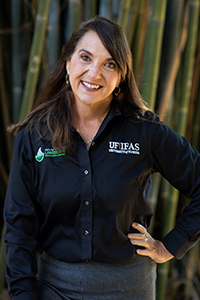Wendy's Wanderings
November 9, 2022
For Florida Fall Color, Look to Natives
Looking at the calendar we see it is fall in Florida. It is hard to feel in the autumn mood of scarves, boots, and pumpkin spice lattes when temperatures are still in the 80s. But if you look closely there are changes happening in our trees. While the rest of the country is saying farewell to fall color, our deciduous hardwoods are just beginning to turn. The autumn color show is mostly from Central Florida to North Florida, where the color change starts in November and goes until after the holidays. When we have had adequate rain fall and cooler temperatures, we can get plenty of leaf color change in native trees. We say color "change," but really some color pigments have been there all along. When chlorophyll breaks down from colder temperatures and less sunlight, the yellow and orange pigments (carotenoids) become dramatically visible. Dark red leaves occur from the chemical change of sugars trapped in the leaves producing red pigments, anthocyanins.
Florida has many native deciduous trees that have a color change. A standout for fall color is the bald cypress (Taxodium distichum), this deciduous conifer goes from summer green to a rusty bronze and holds that color for a least a month. Our native sweet gum (Liquidambar styraciflua) can have yellow or maroon leaves in the late fall. The deciduous Shumard oak (Quercus shumardii) leaves can turn from yellow to red depending on the coolness the evenings. Native green ash (Fraxinus pennsylvanica) puts on a beautiful color show with many yellow leaves in its huge canopy. Our hickory trees like Carya glabra are known for more than their nuts in the fall; their large leaves turn a beautiful coppery bronze. Of course, the Florida red maple (Acer rubrum) and the Florida sugar maple (Acer floridanum) have a lovely fall color show with red and yellow leaves.
Once those leaves hit the ground, don't be so tempted to rake them up into a bag and out to the curb. We are learning that leaves are used by many creatures to get through the winter successfully. Some moth and butterfly eggs, larva, or pupa can overwinter in fallen leaves. Frogs, toads, and even salamanders use the leaves to hide out from predators. These animals will provide important help with garden integrated pest management in the spring. Native bees and fireflies can use the fallen leaf layer to go through their life cycle. If possible, try to let fallen leaves remain as a wintertime habitat for the important creatures you share your yard with. Remember too that those leaves help return nutrients to the landscape soil as they break down. Fallen leaves can also be used as a natural mulch in landscape beds or be added to your compost pile. For additional information on gardening for fall, check out this colorful list at UF/IFAS Gardening Solutions.
-- Wendy Wilber

